Spencer Finch will change how you look. The Brooklyn-based artist doesn’t just create captivating art objects; he invites visitors to notice the color of light in the gallery itself – a specific spectrum that can transport you to a different time and place. If you’ve never experienced a Spencer Finch installation, I highly recommend a visit to his current exhibition “One Hundred Famous Views of New York City (After Hiroshige)” at James Cohan gallery in New York, on view now through October 4, 2025.
Spencer Finch, Haiku (First Snow, Woods, Winter), 2025
Four light sculptures span the entrance wall. All from Finch’s “haiku series,” each consists of three vertical LED lights (resembling fluorescent light tubes) wrapped in colorful filters. The total combination of light that each casts into the room perfectly matches the daylight from a different time and place, measured by the artist. The works on view here are each from a different season – winter through autumn – allowing you to walk through the light of a full year in a single hallway. Each also contains visual hints to that time and place, like in the “Autumn” work (below) for example, where the small orange sections recall falling oak leaves. The three-column shape is inspired by the Japanese haiku in both its verticality and the number of colors in each – using the “5,7,5” syllabic rules of the poetry format and including exactly 17 sections. In other words, each of these is a haiku poem that uses color rather than syllables to result in a total light projection that matches a precisely measured moment in time.
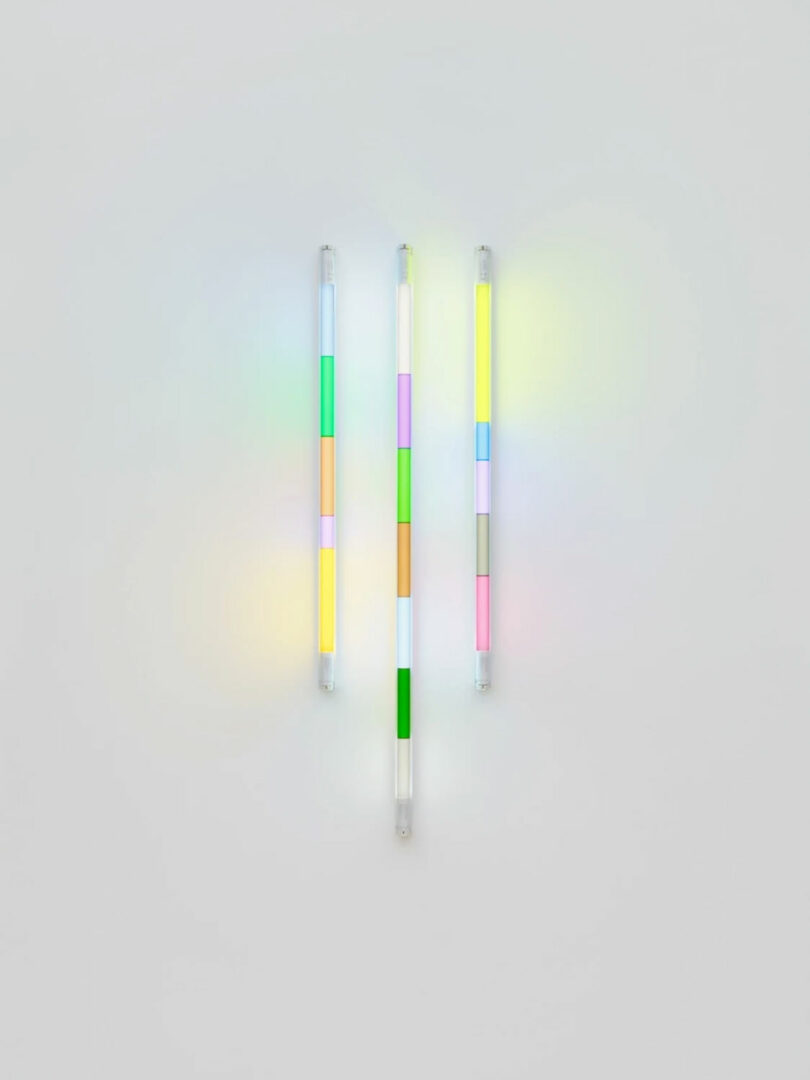
Spencer Finch, Haiku (Wisteria on a Stone Wall, Spring), 2025
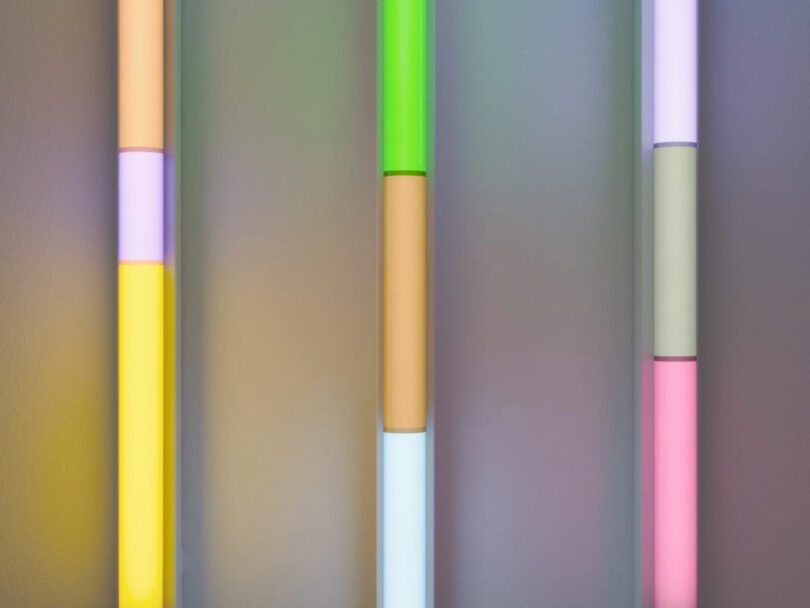
Spencer Finch, Haiku (Wisteria on a Stone Wall, Spring), 2025 (detail)
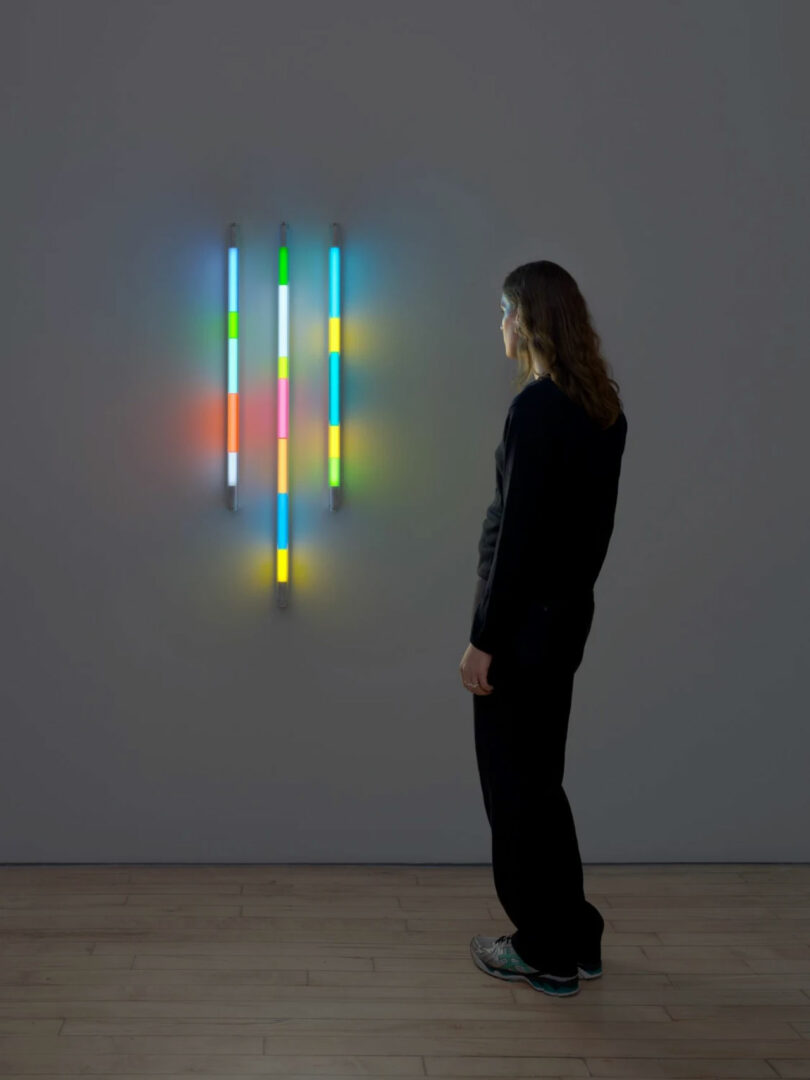
Spencer Finch, Haiku (Summer Afternoon), 2025
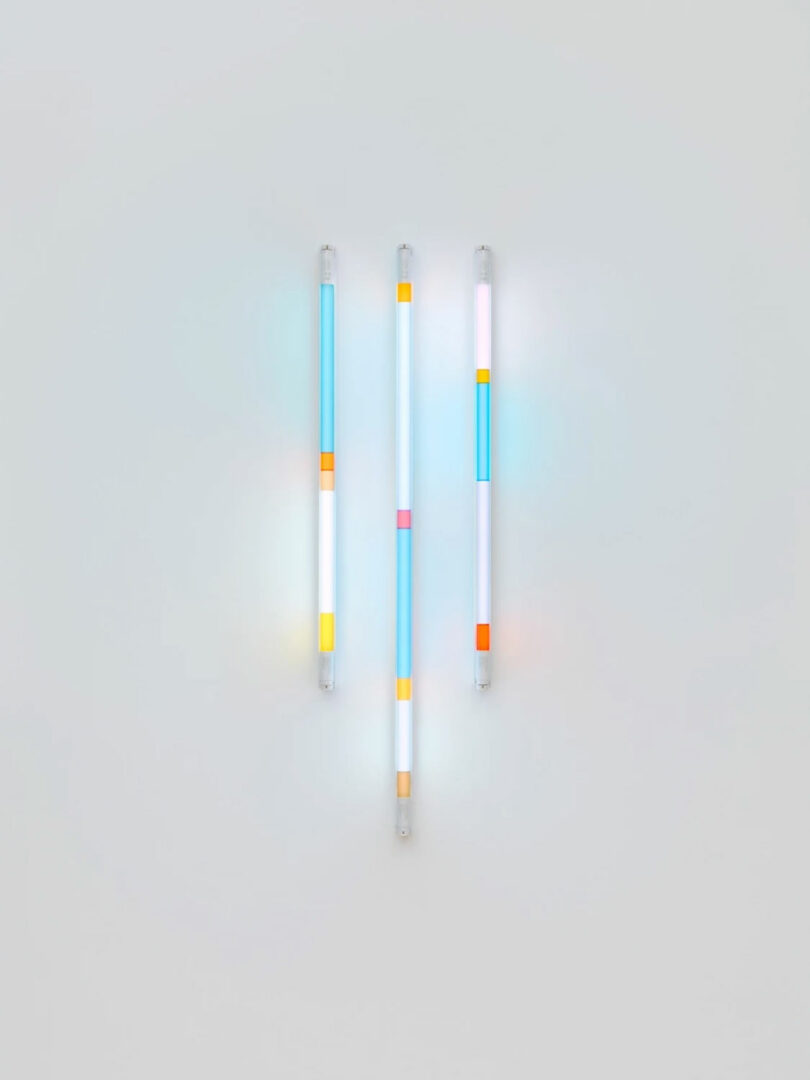
Spencer Finch, Haiku (Oak Leaves Falling in the Sky, Autumn), 2025
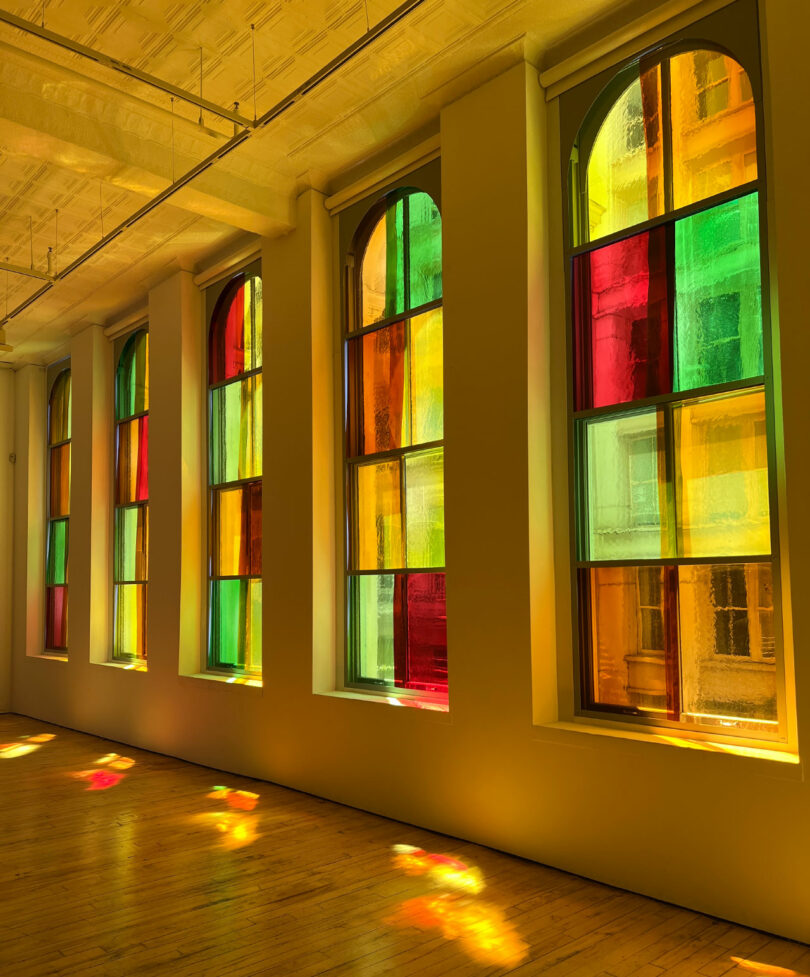
Spencer Finch, Moonlight (Reflected in a Pond), 2025
The biggest work in the gallery has a similar light-changing precision. “Moonlight (Reflected in a Pond), 2025” consists of dozens of blown-glass panels that lean against an existing wall of windows in the gallery. These accurately translate sunlight into a measured moment of moonlight in New England as it reflected off a pond. Perception meets imagination in a work as intelligent as it is beautiful. And note that within this room, the gallery has turned off all artificial lights above!
The work is inspired by the Japanese tradition of moon-viewing that honors the autumn moon, again inviting us to experience the light of a different time and place where we stand.
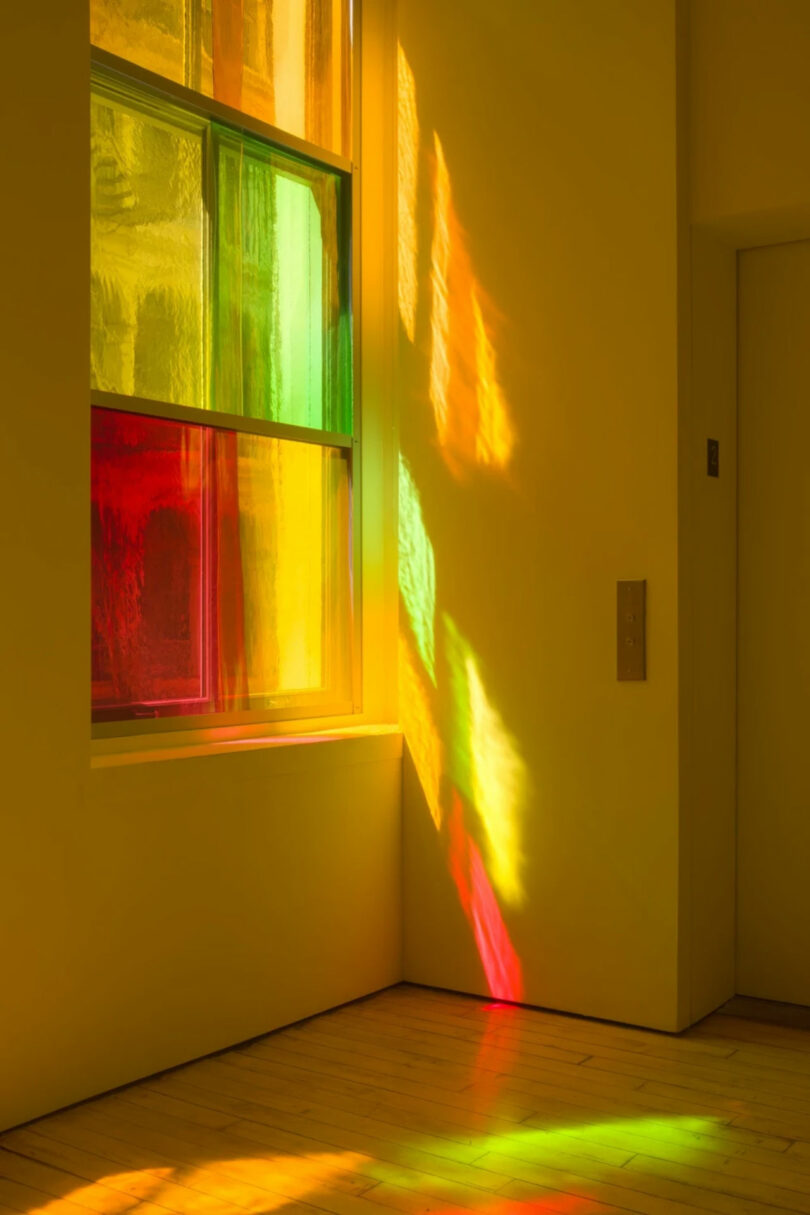
Spencer Finch, Moonlight (Reflected in a Pond), 2025 (detail)
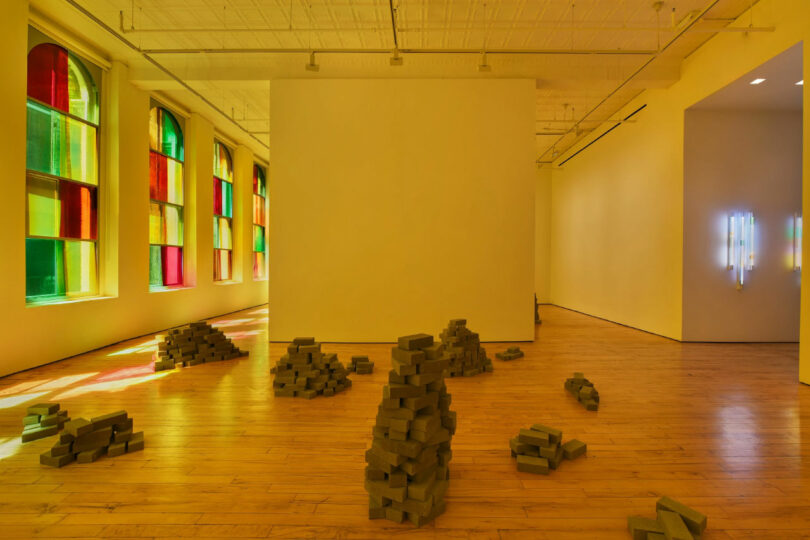
You’ll find yourself stepping around and weaving between piles of bricks on the floor – a single site-specific work titled “Fourteen Stones, 2025.” Inspired by Ryoan-ji, the 15th-century Zen Garden in Kyoto, Finch uses common concrete bricks to reproduce the shapes of the garden’s 15 stones – here arranged so only 14 are visible from any corner at a time – a nod to the same idea at the original centuries-old garden, where only a fraction of all stones can be seen at one time.
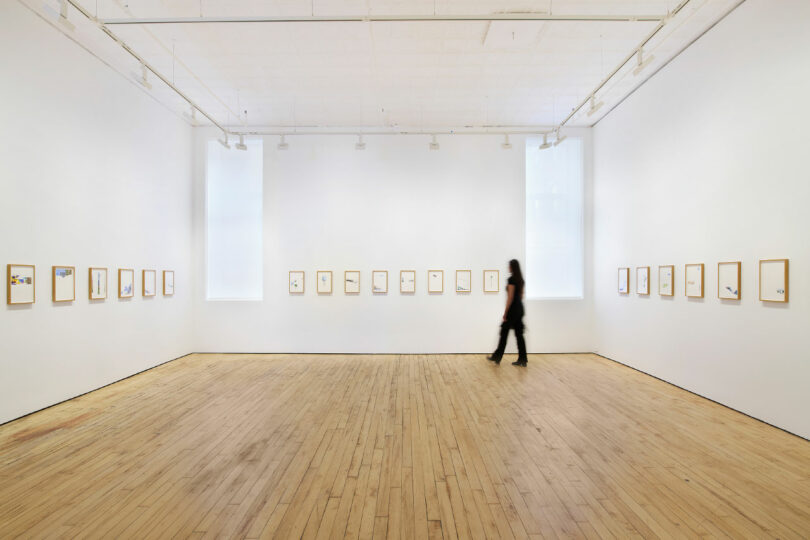
Spencer Finch, One Hundred Famous Views of New York City (After Hiroshige), 2025
The final room holds 42 framed watercolors that offer another fascinating connection between New York and Japan through a more traditional art material and method. Finch painted these fractional images by using Hiroshige’s series “One Hundred Famous Views of Edo” as a template for exploring New York City’s landscape. By overlaying maps of both 19th-century Edo (now Tokyo) and contemporary New York, Finch visited and photographed corresponding locations of Hiroshige’s woodblock print views. He then extracted forms from the original ukiyo-e prints as templates to paint small sections from his New York photographs. The result is an overlap where historic Edo and contemporary New York exist simultaneously through cut-out shapes, inviting viewers to appreciate, investigate, and connect the two times and locations. I highly recommend exploring Hiroshige’s original series.
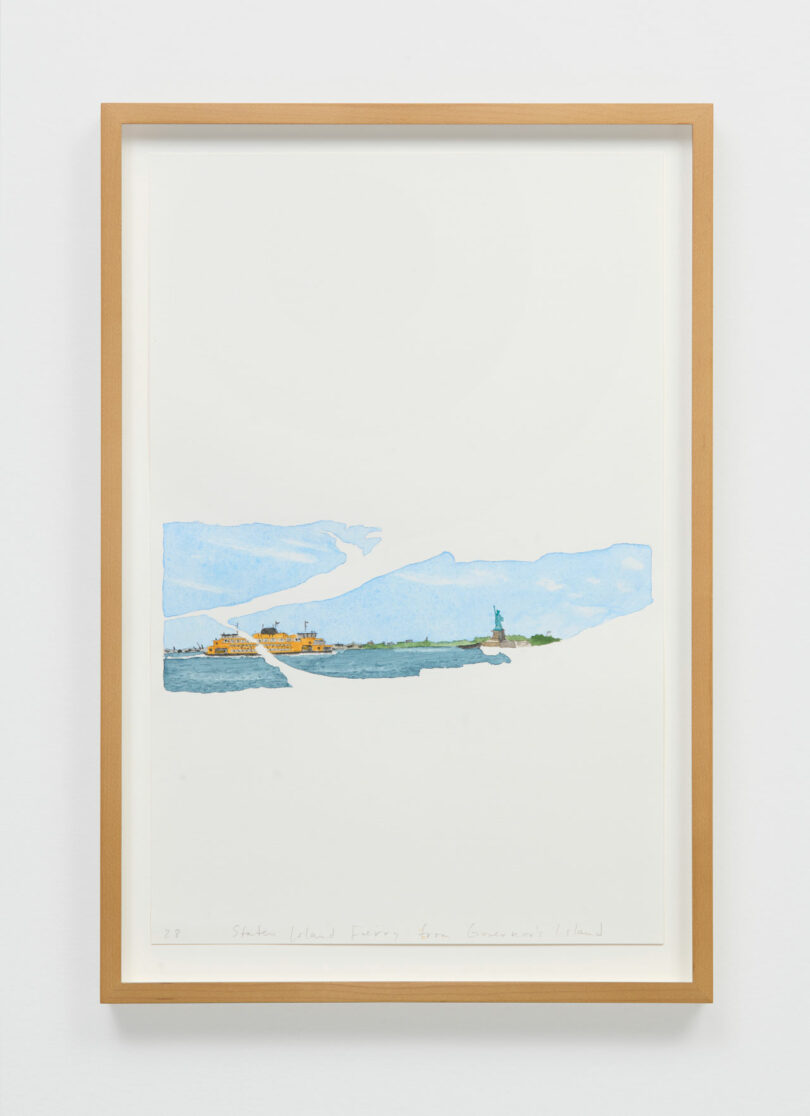
Spencer Finch, One Hundred Famous Views of New York City (After Hiroshige), 2025
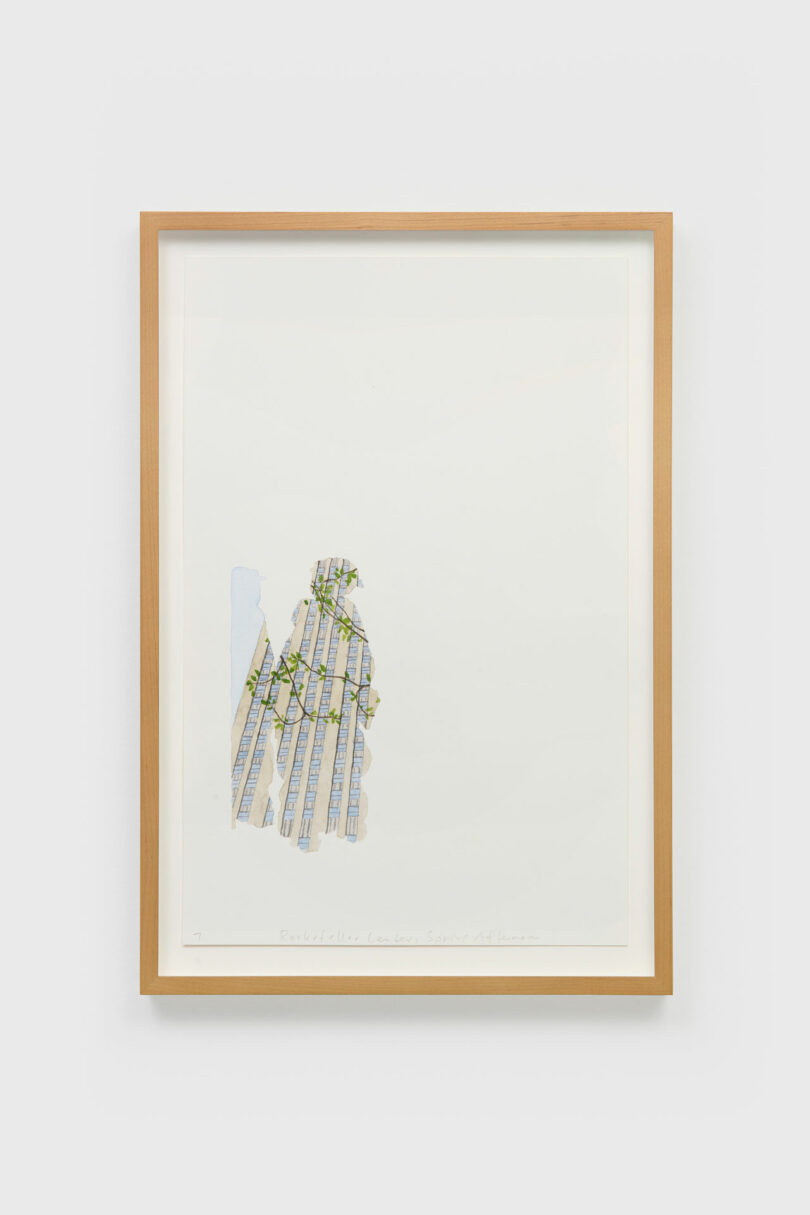
Spencer Finch, One Hundred Famous Views of New York City (After Hiroshige), 2025
While Japanese visual culture has long influenced Spencer Finch’s work – dating back to his teenage years studying pottery in Kyoto – this exhibition is the artist’s first exhibition fully dedicated to that influence. The result is a must-visit exhibition that is dazzling, cerebrally satisfying, and rich in respect and gratitude for both Japan and New York City.
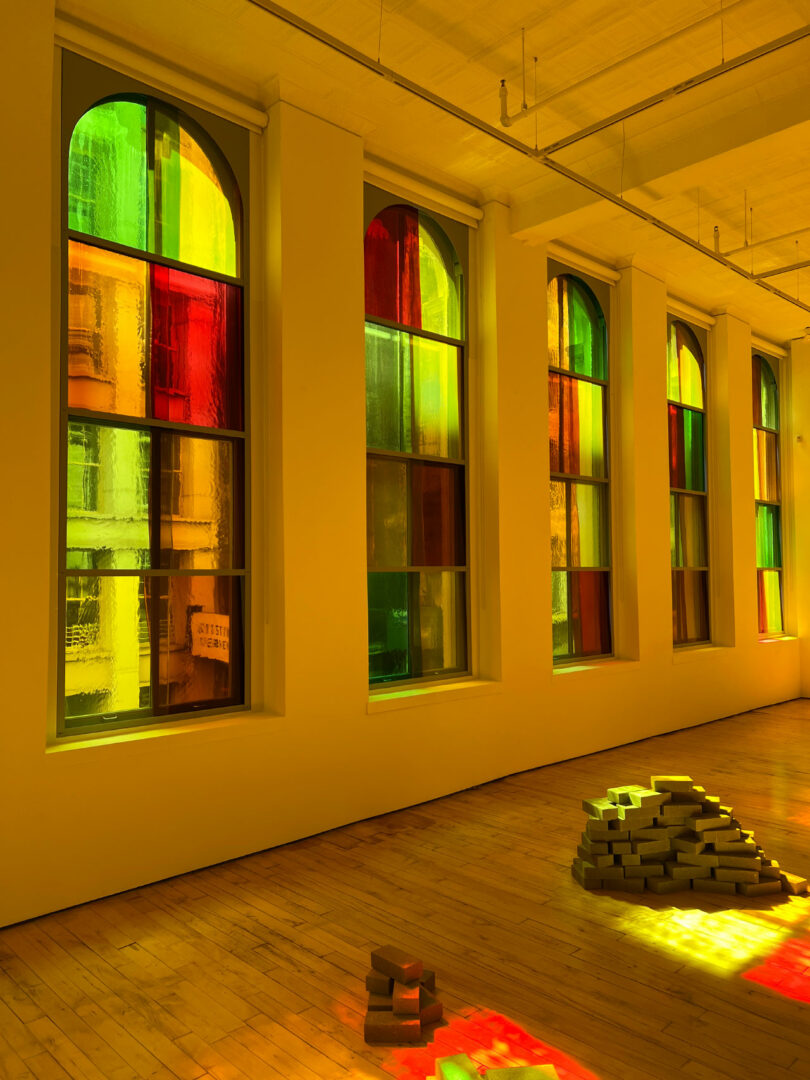
Spencer Finch, Moonlight (Reflected in a Pond), 2025 (detail)
What: Spencer Finch: One Hundred Famous Views of New York City (After Hiroshige)
Where: James Cohan, 52 Walker Street, New York NY (2nd floor)
When: September 5 – October 4, 2025
All Images © Spencer Finch 2025. Courtesy the artist and James Cohan, New York. Photographed by Phoebe d’Heurle.

